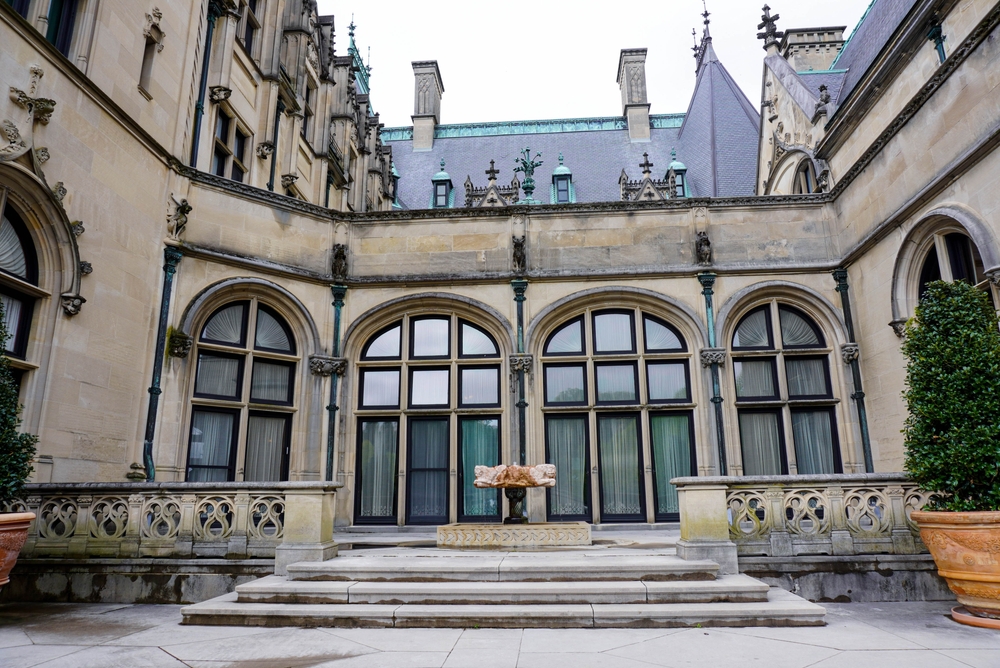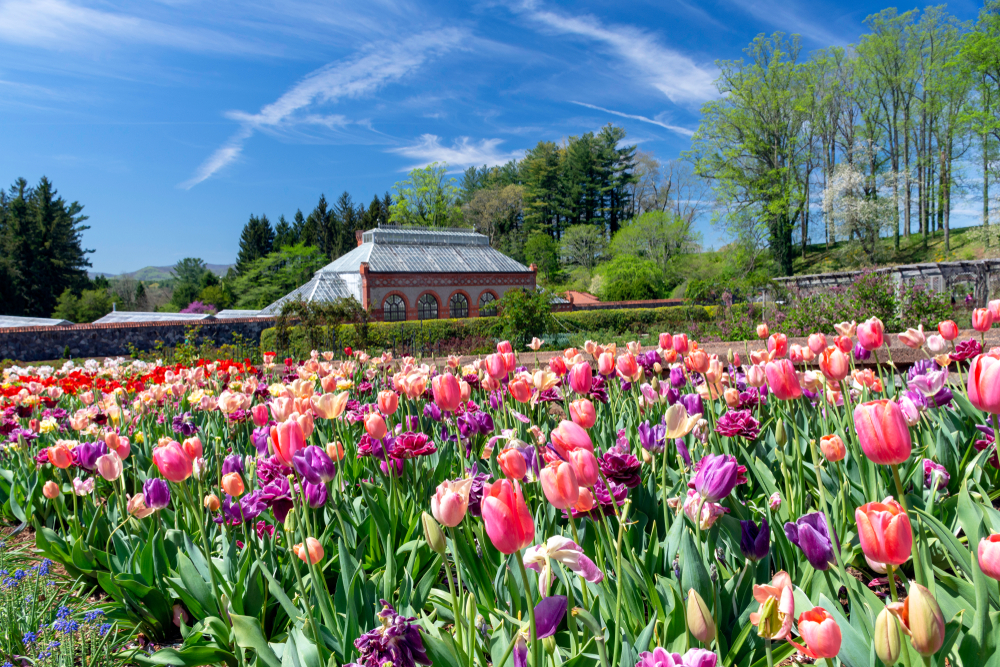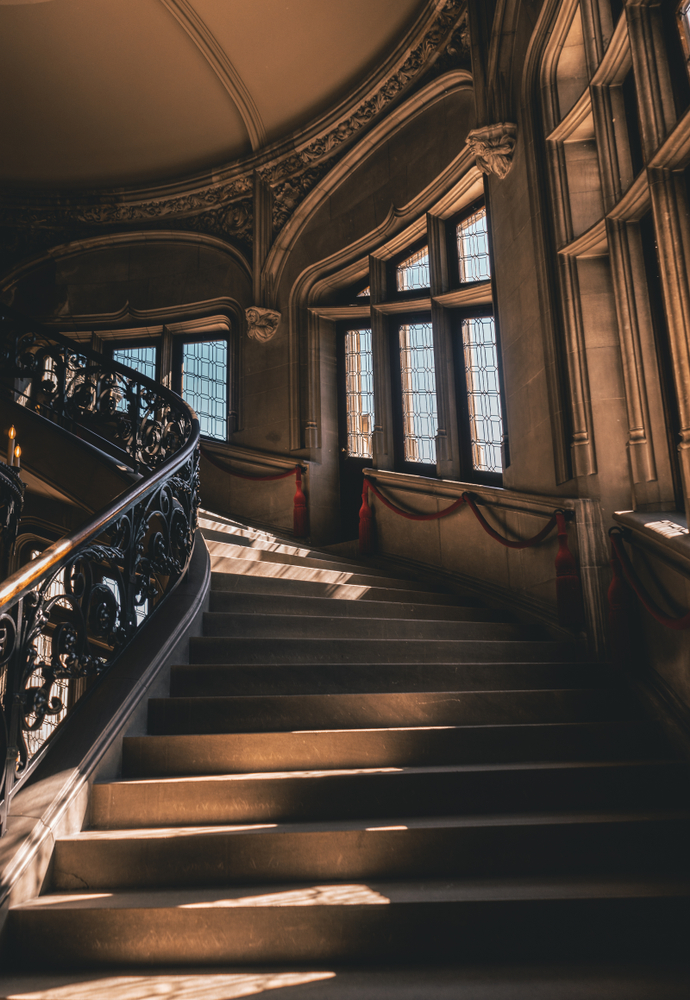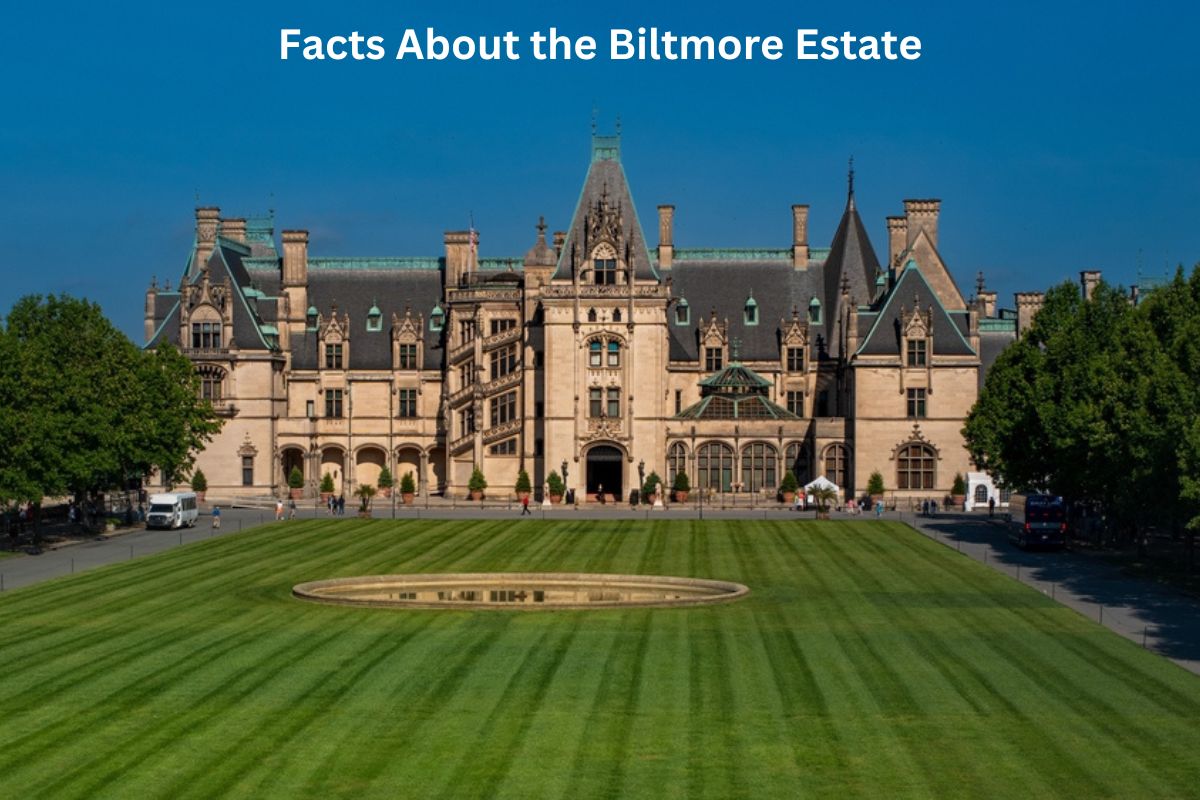The Biltmore Estate, located in Asheville, North Carolina, is an iconic historic landmark renowned for its grandeur and cultural significance.
This sprawling estate, built in the late 19th century, is known for its colossal mansion, meticulously landscaped gardens, award-winning winery, and captivating history.
In this introduction, we will explore the Biltmore Estate’s fascinating features and heritage, highlighting its place as one of the most celebrated privately-owned homes in the United States.
Biltmore Estate Facts
1. The Biltmore House has 250 rooms
The Biltmore House, the centerpiece of the Biltmore Estate, is a colossal mansion that covers approximately 178,926 square feet. It is known for its impressive scale and boasts an astounding 250 rooms.
Also Read: Facts About Cornelius Vanderbilt
This massive structure includes an array of rooms, ranging from bedrooms and bathrooms to various formal and informal living spaces, as well as numerous specialized rooms such as a library, music room, banquet hall, and more.
The sheer size of the Biltmore House is a testament to the opulence and extravagance of the Gilded Age.

2. Designed by Richard Morris Hunt
The Biltmore Estate was designed by the renowned American architect Richard Morris Hunt. Hunt was a prominent architect of his time and was well-known for his neoclassical and Beaux-Arts architectural designs.
Also Read: Accomplishments of Cornelius Vanderbilt
He played a pivotal role in shaping the mansion’s grandeur and opulence, blending various architectural styles to create the unique and iconic structure that stands today as a symbol of the Vanderbilt family’s wealth and influence.
3. “Biltmore” comes from “Bildt” and “More”
The name “Biltmore” has an interesting origin. It is a combination of two words: “Bildt” and “More.” “Bildt” was a reference to the ancestral home of the Vanderbilt family in Holland, which connected George Washington Vanderbilt II to his European heritage.
“More,” on the other hand, means “rolling hills” in Old English, reflecting the picturesque and rolling landscape of the estate. Therefore, the name “Biltmore” embodies both the family’s heritage and the natural beauty of the estate’s surroundings.

4. The Gardens were designed by Frederick Law Olmsted
The Biltmore Estate features meticulously designed and beautifully landscaped gardens that are a testament to the estate’s commitment to beauty and horticulture.
These gardens were created by the renowned landscape architect Frederick Law Olmsted, who is famous for designing New York City’s Central Park and many other notable landscapes. Among the garden features are:
- Italian Garden: This formal garden is characterized by symmetrical patterns, terraced elements, and classical statuary. It offers a tranquil and picturesque setting with reflecting pools and vibrant seasonal flower displays.
- Formal Gardens: These gardens include the Shrub Garden and the Spring Garden, showcasing a wide variety of plants and seasonal blooms. The Shrub Garden features numerous azaleas and rhododendrons, while the Spring Garden bursts with colorful tulips and daffodils.
- Conservatory: Located within the gardens, the conservatory houses a diverse collection of exotic plants and tropical species. Visitors can explore the lush greenery and vibrant blooms year-round.
5. Biltmore has a renowned winery
The Biltmore Estate is home to one of the most renowned wineries in the United States. The Biltmore Winery produces a wide range of wines, including reds, whites, and sparkling varieties.
Visitors can take guided tours of the winery to learn about the wine-making process and enjoy tastings of Biltmore’s award-winning wines. The winery’s picturesque setting amidst the Blue Ridge Mountains adds to the charm of the wine-tasting experience.

6. Antler Hill Village offers shops and restaurants
This historic area within the estate provides additional attractions and amenities for visitors. It offers a glimpse into the past, featuring shops, restaurants, and exhibits that showcase the history of the estate, the Vanderbilt family, and the surrounding region.
Visitors can explore artifacts, photographs, and displays that offer insights into the estate’s fascinating history and its role in the local community. It’s a charming place to stroll, dine, and learn more about the Biltmore Estate’s cultural significance.
7. Largest Privately-Owned Home
The Biltmore Estate is often referred to as the largest privately-owned home in the United States. This distinction highlights the immense size and grandeur of the Biltmore House, which is unmatched by most other privately-owned residences in the country.
Unlike many historic estates, the Biltmore remains in the hands of the Vanderbilt family and has not become a public or government-owned property. It serves as a testament to the family’s legacy and their commitment to preserving the estate’s history and heritage.

8. Elaborate holiday displays
One of the most magical times to visit the Biltmore Estate is during the holiday season. Every year, the Biltmore House is transformed into a winter wonderland with elaborate Christmas decorations.
Thousands of twinkling lights, festive ornaments, and beautifully decorated Christmas trees adorn the mansion’s interior.
Visitors can experience the enchantment of the season and immerse themselves in the festive spirit by touring the lavishly decorated rooms and taking part in special holiday events and traditions.
9. Carefully maintained by the Vanderbilt family
The Biltmore Estate is not merely a historic relic but a meticulously preserved and maintained property. The Vanderbilt family has taken great care to ensure that the estate remains in excellent condition, both in terms of the mansion and its extensive gardens.
This dedication to preservation ensures that future generations can continue to appreciate and learn from the architectural, cultural, and natural beauty of the estate, making it a living piece of American history.
10. A popular tourist destination
The Biltmore Estate is a major tourist destination, attracting millions of visitors each year from around the world.
It offers a wide range of activities and experiences for tourists, including guided tours of the Biltmore House, exploration of the gardens and outdoor areas, wine tastings at the winery, shopping and dining at Antler Hill Village, and participation in special events and seasonal festivities.
The estate’s popularity as a tourist destination has made it an integral part of the local economy and a cultural landmark in the Asheville, North Carolina region. Visitors can immerse themselves in the rich history and natural beauty of the Biltmore Estate while enjoying a variety of amenities and activities.
